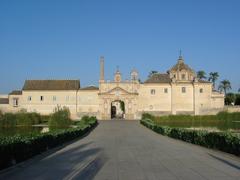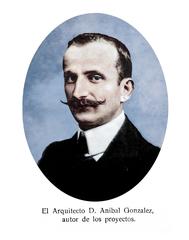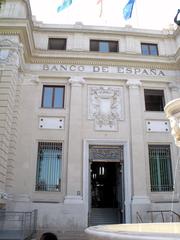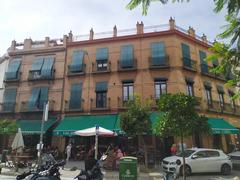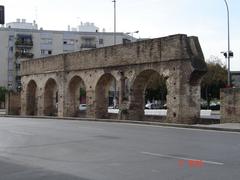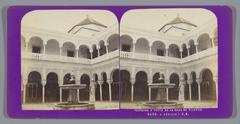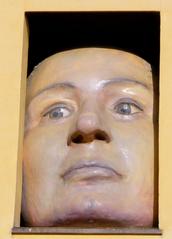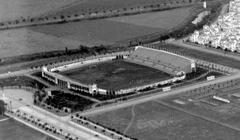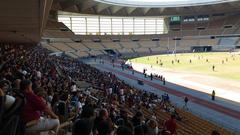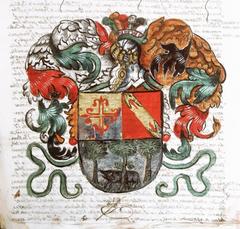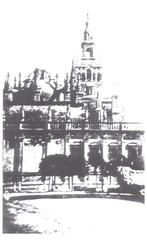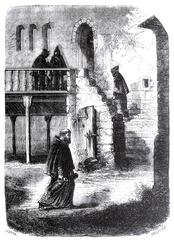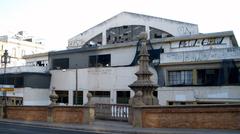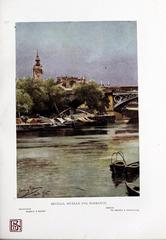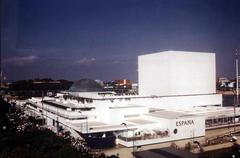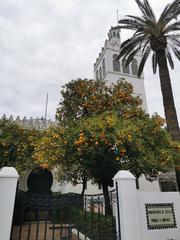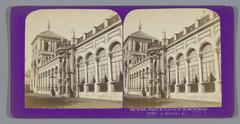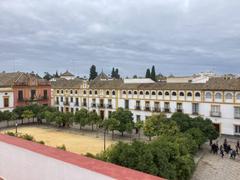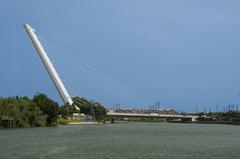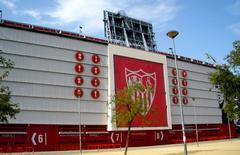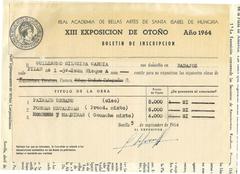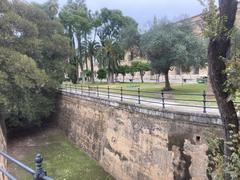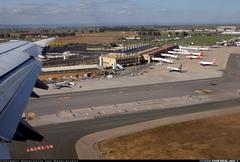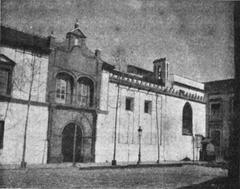Guide to Visiting Alameda de Hércules in Seville
Date: 17/07/2024
Introduction
The Alameda de Hércules, located in the heart of Seville, Spain, stands as a remarkable testament to the city’s rich history and cultural evolution. Established in 1574 by Francisco Zapata y Cisneros, the Count of Barajas, this public garden is one of the oldest in Europe. It was initially created by transforming a flood-prone marshland into a stable public space adorned with iconic columns topped with statues of Hercules and Julius Caesar (Seville Tourism). Over the centuries, the Alameda has seen periods of grandeur and decline, evolving from a fashionable promenade for the elite in the 17th and 18th centuries to a neglected area by the 19th century due to industrialization and urban expansion (ABC de Sevilla). However, the late 20th and early 21st centuries brought significant revitalization efforts that restored its status as a vibrant cultural and social hub (El País). Today, the Alameda de Hércules is a thriving center known for its eclectic mix of historical and contemporary elements, hosting numerous cultural events and attracting both locals and tourists alike (Diario de Sevilla). This guide aims to provide a comprehensive overview of the Alameda de Hércules, covering its history, cultural significance, visitor information, and future prospects.
Table of Contents
- Introduction
- History of Alameda de Hércules
- Architectural and Artistic Highlights
- Social and Economic Impact
- Future Prospects
- Visitor Information
- FAQ Section
- Conclusion
- References
History of Alameda de Hércules, Seville, Spain
Origins and Early Development
The Alameda de Hércules, often referred to simply as “La Alameda,” is one of the oldest public gardens in Europe, with its origins dating back to 1574. It was established by Francisco Zapata y Cisneros, the Count of Barajas, who sought to transform a flood-prone area into a public space for the citizens of Seville. The area was initially a marshland, and the Count undertook significant engineering works to drain the land and create a more stable environment. The name “Alameda de Hércules” is derived from the two large columns topped with statues of Hercules and Julius Caesar, which were erected at the southern end of the promenade (Seville Tourism).
The Golden Age and Decline
During the 17th and 18th centuries, the Alameda de Hércules became a fashionable promenade for the city’s elite. It was a place where the nobility and wealthy citizens would stroll, socialize, and enjoy the outdoors. The area was adorned with fountains, statues, and lush greenery, making it a picturesque setting for leisure activities. However, by the 19th century, the Alameda began to decline. The rise of industrialization and urban expansion led to neglect and deterioration of the area. The once-grand promenade became associated with poverty and crime, losing its status as a prestigious public space (ABC de Sevilla).
20th Century Revitalization
The 20th century saw several attempts to revitalize the Alameda de Hércules. In the early 1900s, efforts were made to clean up the area and restore some of its former glory. However, it wasn’t until the late 20th and early 21st centuries that significant changes took place. The local government initiated comprehensive urban renewal projects aimed at transforming the Alameda into a vibrant cultural and social hub. These projects included the restoration of historical monuments, the introduction of new public art installations, and the development of modern amenities such as cafes, restaurants, and performance spaces (El País).
Modern Era and Cultural Significance
Today, the Alameda de Hércules is a thriving cultural and social center in Seville. It has become a symbol of the city’s resilience and ability to adapt to changing times. The area is known for its eclectic mix of historical and contemporary elements, making it a popular destination for both locals and tourists. The Alameda hosts numerous cultural events, including music festivals, art exhibitions, and food markets, reflecting the diverse and dynamic nature of Seville’s cultural scene (Diario de Sevilla).
Architectural and Artistic Highlights
The architectural and artistic elements of the Alameda de Hércules are a testament to its rich history. The two iconic columns, originally from a Roman temple, were repurposed and topped with statues of Hercules and Julius Caesar, symbolizing strength and leadership. These columns have become emblematic of the Alameda and are a popular photo spot for visitors. Additionally, the area features a variety of public art installations, including contemporary sculptures and murals that add to its vibrant atmosphere. The blend of historical and modern art creates a unique aesthetic that appeals to a wide audience (Seville City Council).
Social and Economic Impact
The revitalization of the Alameda de Hércules has had a significant social and economic impact on the surrounding area. The influx of visitors and the establishment of new businesses have contributed to the local economy, creating jobs and boosting tourism. The area has also become a focal point for community activities, fostering a sense of belonging and pride among residents. The transformation of the Alameda from a neglected space to a bustling cultural hub is a prime example of successful urban regeneration, demonstrating the potential for public spaces to drive social and economic development (Andalucía Información).
Future Prospects
Looking ahead, the future of the Alameda de Hércules appears promising. Ongoing efforts to maintain and enhance the area ensure that it remains a vibrant and attractive destination. Plans for further development include the introduction of more green spaces, improved infrastructure, and additional cultural programming. These initiatives aim to preserve the historical significance of the Alameda while adapting to the needs of a modern urban population. The continued investment in the area underscores its importance as a cultural and social landmark in Seville (La Vanguardia).
Visitor Information
Ticket Prices and Opening Hours
Visiting the Alameda de Hércules is free of charge, making it an accessible destination for everyone. The area is open 24/7, allowing visitors to explore at any time of the day or night. However, specific attractions, such as cafes, restaurants, and performance spaces, may have their own operating hours.
Travel Tips and Accessibility
The Alameda de Hércules is centrally located in Seville and is easily accessible by public transportation, including buses and taxis. For those driving, there are parking facilities nearby. The area is also pedestrian-friendly, with wide promenades suitable for strollers and wheelchairs.
Nearby Attractions
While visiting the Alameda, you can explore several nearby attractions, including:
- Metropol Parasol: An architectural marvel offering stunning views of the city.
- Seville Cathedral: One of the largest cathedrals in the world, known for its Gothic architecture.
- Real Alcázar: A royal palace with beautiful gardens and historic significance.
Special Events and Guided Tours
The Alameda de Hércules hosts various special events throughout the year, including music festivals, art exhibitions, and food markets. Guided tours are available for those interested in learning more about the history and significance of the area. These tours often include visits to nearby historical sites and provide valuable insights into Seville’s rich cultural heritage.
FAQ Section
Q: What are the visiting hours for Alameda de Hércules? A: The Alameda de Hércules is open 24/7, but individual attractions may have their own operating hours.
Q: Do I need a ticket to visit Alameda de Hércules? A: No, visiting the Alameda de Hércules is free of charge.
Q: Are there guided tours available? A: Yes, guided tours are available and can provide valuable insights into the history and significance of the area.
Q: What are some nearby attractions? A: Nearby attractions include Metropol Parasol, Seville Cathedral, and Real Alcázar.
Conclusion
The Alameda de Hércules is more than just a historical site; it is a living symbol of Seville’s resilience and cultural dynamism. From its origins in the 16th century as a public garden to its modern role as a bustling cultural hub, the Alameda has continually adapted to the changing needs of the city. The recent revitalization efforts have not only restored its historical monuments and introduced modern amenities but have also transformed it into a focal point for community activities and economic growth (Andalucía Información). As visitors stroll through its promenades, enjoy its cafes and restaurants, and partake in its numerous cultural events, they are contributing to a vibrant and inclusive urban space. The Alameda de Hércules stands as a prime example of successful urban regeneration, demonstrating the potential for public spaces to drive both social and economic development. With ongoing plans for further enhancement, including more green spaces and improved infrastructure, the future of the Alameda de Hércules looks promising (La Vanguardia). For anyone planning a visit to Seville, the Alameda de Hércules is a must-see destination that offers a unique blend of history, culture, and modernity.
References
- Seville Tourism, n.d., Seville Tourism
- ABC de Sevilla, 2018, ABC de Sevilla
- El País, 2006, El País
- Diario de Sevilla, 2019, Diario de Sevilla
- Andalucía Información, 2020, Andalucía Información
- La Vanguardia, 2021, La Vanguardia
